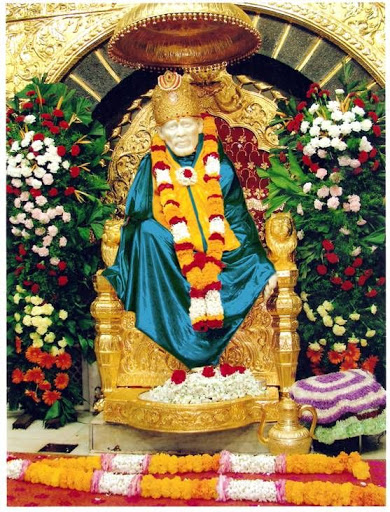
The shrine which houses Baba’s tomb was originally constructed as a wada (large private house) during Baba’s last years in his physical body. In this form, thousands of people a day are able to take Baba’s darshan and pay their homage to Him. “Attention one and all!” commands the noon arati psalm, “Come, come quickly and make obeisance to Sai Baba!” This is exactly what the devotees are hastening to do, and to be part of this torrent of emotion is a powerful experience. The atmosphere of fervent and one-pointed devotion reaches its zenith here. People may wait up to eight hours just for the opportunity to pay brief homage to their Lord. “Sri Satchidananda Sadguru Sainath Maharaj ki Jai !” (Hail the great Sadguru, Lord Sai, who is being-consciousness-bliss!) is the chant on the lips of most of His devotees while most others may sing bhajan or whisper prayers.Īt busy times, especially during festivals, the queue for darshan used to stretch for hundreds of meters along the village streets, though the recently constructed Queue Complex has changed this. Some may have personal items- such as a shawl, book, key to new possession, etc, for which they want to get Baba’s blessing by offering it at his feet and having it touch his tomb. People carry flowers, garlands, sweets, or fruit to offer Baba at his Samadhi. This level also has the grinding stone and the wooden vessel called Kolamba in which Baba used to keep the Bhiksha brought from the village.Baba has promised, “I shall be active and vigorous even from the tomb,” and it is perhaps in the Mandir that we can most fully experience the phenomenon of Sai Baba and the remarkable way he has touched the hearts and lives of millions of people from all over the globe.Baba’s omniscient presence is felt when one has Baba’s glance, when one sits at Baba’s feet.Īt any given point, the shrine temple is full of devotees eagerly queuing up to have Baba’s darshan. The main attraction of this place is the oil painting of Shri Sai Baba sitting in a carved wooden shrine. The second level of Dwarkamai has a square stool made of stone, which Baba used for taking a bath. Just in front of the room where the chariot is kept is a small temple.Ī saffron flag flies over it. One contains the chariot and the second a palkhi. The first level of Dwarkamai has a portrait of Baba and a big stone on which Baba used to sit.


Before Baba's arrival in Shridhi, Dwarkamai was an old mosque in a dilapidated condition.īaba turned it into Dwarkamai and proved that God is one. Here god sai baba solved problems of the people, cured their sickness and worries. Dwarkamai is situated on the right of the entrance of Samadhi Mandir. Lord Sai baba stayed at Dwarkamai till the very end of his life. Shri Sai Baba came to Shirdi with a marriage procession.


 0 kommentar(er)
0 kommentar(er)
